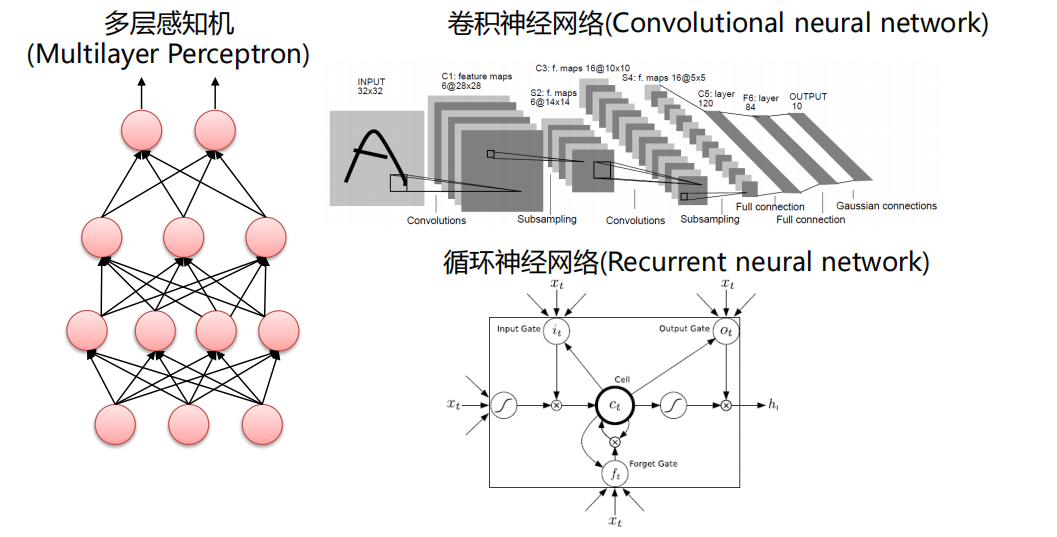深度学习透明度提升:神经网络可解释性实战演练
发布时间: 2024-09-06 03:58:34 阅读量: 109 订阅数: 48 


# 1. 神经网络可解释性的理论基础
神经网络可解释性是人工智能领域的一项重要议题,它涉及到模型输出的逻辑性和透明度。可解释性不仅能增强用户对AI系统的信任,还能助力开发者发现模型潜在的错误和偏见,进而优化模型结构和算法。
随着深度学习的发展,神经网络的结构和复杂性日益增长,模型的决策过程如同“黑箱”,越来越难以理解。为此,学界和产业界都开始重视神经网络可解释性(Neural Network Interpretability),试图打开这个“黑箱”,提升人工智能系统的透明度和可靠性。
可解释性可以通过不同的理论框架来实现,例如,通过信息论、统计学和认知科学的理论来解释模型的决策依据,或通过因果关系的推导来揭示模型预测的深层次原因。本章将探讨神经网络可解释性的理论基础,为后续章节中介绍的技术方法和实践案例打下坚实的理论支撑。
# 2. 神经网络可解释性的技术方法
## 2.1 模型内部可视化的原理与工具
模型内部可视化是将神经网络的内部机制,包括权重、激活函数的输出以及层间的交互等,以直观的形式展现给研究者或开发者,以帮助理解模型的决策过程。此方法能揭示模型的工作原理,对识别模型的潜在问题和提升模型性能具有重要作用。
### 2.1.1 权重可视化
权重可视化是展示模型内部权重的最直观方式,它有助于理解输入特征与输出决策之间的关系。对于卷积神经网络(CNN),权重可视化尤为重要,因为权重图可以揭示网络对特定模式的敏感性。
**权重可视化代码示例:**
```python
import tensorflow as tf
import matplotlib.pyplot as plt
# 加载预训练模型
model = tf.keras.applications.VGG16(weights='imagenet', include_top=False)
layer_outputs = [layer.output for layer in model.layers if 'conv' in layer.name]
# 创建一个模型,输出特定卷积层的输出
activation_model = tf.keras.models.Model(inputs=model.input, outputs=layer_outputs)
activations = activation_model.predict(input_image)
# 选择一个卷积层查看权重
first_layer_activation = activations[0]
# 绘制权重
plt.matshow(first_layer_activation[0, :, :, 0], cmap='viridis')
plt.show()
```
**参数说明与逻辑分析:**
在上述代码中,我们首先加载了一个VGG16模型,并选取了所有卷积层的输出。然后,我们创建了一个新的模型,仅输出卷积层的激活。对于特定输入图像`input_image`,我们获取了这些层的激活,并选择了其中一个卷积层的激活来可视化。`plt.matshow`函数用于绘制权重矩阵。
### 2.1.2 激活映射与特征可视化
激活映射关注的是网络中特定层的激活状态,这有助于研究者理解网络在处理输入数据时如何提取和使用特征。
**特征可视化代码示例:**
```python
from keras.models import Model
import numpy as np
# 加载模型并选择要可视化的卷积层
layer_outputs = [layer.output for layer in model.layers if 'conv' in layer.name]
activation_model = Model(inputs=model.input, outputs=layer_outputs)
# 获取特定层的激活
activations = activation_model.predict(input_image)
# 选择一个卷积层的激活用于可视化
first_layer_activation = activations[0]
# 将激活转换成图像
fig, axarr = plt.subplots(nrows=1, ncols=1, figsize=(20, 20))
axarr.matshow(first_layer_activation[0, :, :, 0], cmap='viridis')
plt.show()
```
**参数说明与逻辑分析:**
这个代码片段与权重可视化的例子非常相似,但是这次我们关注的是激活而不是权重。激活是从模型的卷积层提取出来的,可以显示哪些特征被激活,帮助解释模型在做什么。
## 2.2 基于特征重要性的解释方法
基于特征重要性的解释方法试图量化每个输入特征对最终决策的贡献。这些方法通过计算特征对输出的局部或全局影响,帮助用户理解模型的工作原理。
### 2.2.1 梯度下降法及其改进
梯度下降法是通过计算损失函数相对于特征的梯度来评估特征重要性的一种方法。其核心思想是,如果特征x对损失函数L有较大影响,那么L对x的梯度应该相对较大。
**梯度下降法代码示例:**
```python
from keras import backend as K
def grad_cam(input_model, image_array, layer_name):
preds = input_model.predict(image_array)
loss = K.mean(preds[:, class_idx])
grads = K.gradients(loss, input_model.get_layer(layer_name).output)[0]
pooled_grads = K.mean(grads, axis=(0, 1, 2))
iterate = K.function([input_model.input], [pooled_grads, input_model.get_layer(layer_name).output[0]])
pooled_grads_value, conv_layer_output_value = iterate([image_array])
for i in range(pooled_grads_value.shape[-1]):
conv_layer_output_value[:, :, i] *= pooled_grads_value[i]
heatmap = np.mean(conv_layer_output_value, axis=-1)
heatmap = np.maximum(heatmap, 0)
heatmap /= np.max(heatmap)
return heatmap
# 生成热力图
heatmap = grad_cam(model, input_image, layer_name='block5_conv3')
```
**参数说明与逻辑分析:**
这段代码实现了一个称为Grad-CAM的方法,它是一个用于CNN解释的流行工具。我们首先对模型进行预测,并计算损失函数相对于目标层输出的梯度。梯度被平均后乘以目标层的激活输出以产生热力图。热力图高亮显示了对模型预测有较大贡献的区域。
### 2.2.2 SHAP和LIME的对比分析
SHAP(SHapley Additive exPlanations)和LIME(Local Interpretable Model-agnostic Explanations)是目前流行的两种特征重要性解释方法。它们通过模拟局部模型的行为来解释预测。
**SHAP代码示例:**
```python
import shap
# 创建一个shap explainer对象
explainer = shap.DeepExplainer(model, background_dataset)
shap_values = explainer.shap_values(input_image)
# 可视化特定预测的shap值
shap.image_plot(shap_values, -input_image)
```
**参数说明与逻辑分析:**
SHAP explainer对训练集中的背景数据进行了模型模拟。使用训练好的explainer对象,我们可以计算输入图像的shap值。这些值可以可视化为图像,显示每个特征对模型预测的贡献。SHAP利用博弈论中的Shapley值,为每个特征分配公平的贡献值。
**LIME代码示例:**
```python
import lime
from lime import lime_image
# 创建一个LIME解释器
explainer = lime_image.LimeImageExplainer()
explanation = explainer.explain_instance(input_image[0], model.predict_function, top_labels=5, hide_color=0, num_samples=1000)
# 可视化LIME解释
explanation.show_in_notebook()
```
**参数说明与逻辑分析:**
LIME解释器通过在图像的局部区域进行扰动来生成许多“邻近样本”。这些邻近样本随后被用来训练一个简单的模型,以模拟复杂的模型在邻近区域的行为。最终,LIME提供了一个简单的模型来解释复杂模型的行为,这使得可视化和解释变得直观易懂。
## 2.3 模型简化与原型解释
模型简化与原型解释是指通过简化模型复杂度或构造原型来增加神经网络模型的可解释性。此方法旨在减少模型的复杂性,同时尽可能保持其性能。
### 2.3.1 网络剪枝技术
网络剪枝技术通过移除网络中不必要的或冗余的参数(如权重和神经元),来简化网络模型。它有助于降低模型复杂度、提高运算效率,同时通过观察剪枝前后模型性能的变化来帮助理解哪些参数对模型预测更重要。
**网络剪枝代码示例:**
```python
from keras import models
from keras import backend as K
def prune_network(model, density):
new_model = models.clone_model(model)
new_model.set_weights(model.get_weights())
# 将随机选择的一部分权重设置为零
weights = new_model.get_weights()
new_weights = []
for layer in weights:
layer_shape = layer.shape
layer_flat = layer.reshape(-1)
density_mask = np.random.binomial(1, density, layer_flat.shape).astype(bool)
layer_flat[density_mask] = 0
new_layer = layer_flat.reshape(layer_shape)
new_weights.append(new_layer)
new_model.set_weights(new_weights)
return new_model
# 应用网络剪枝技术
pruned_model = prune_network(
```
0
0





